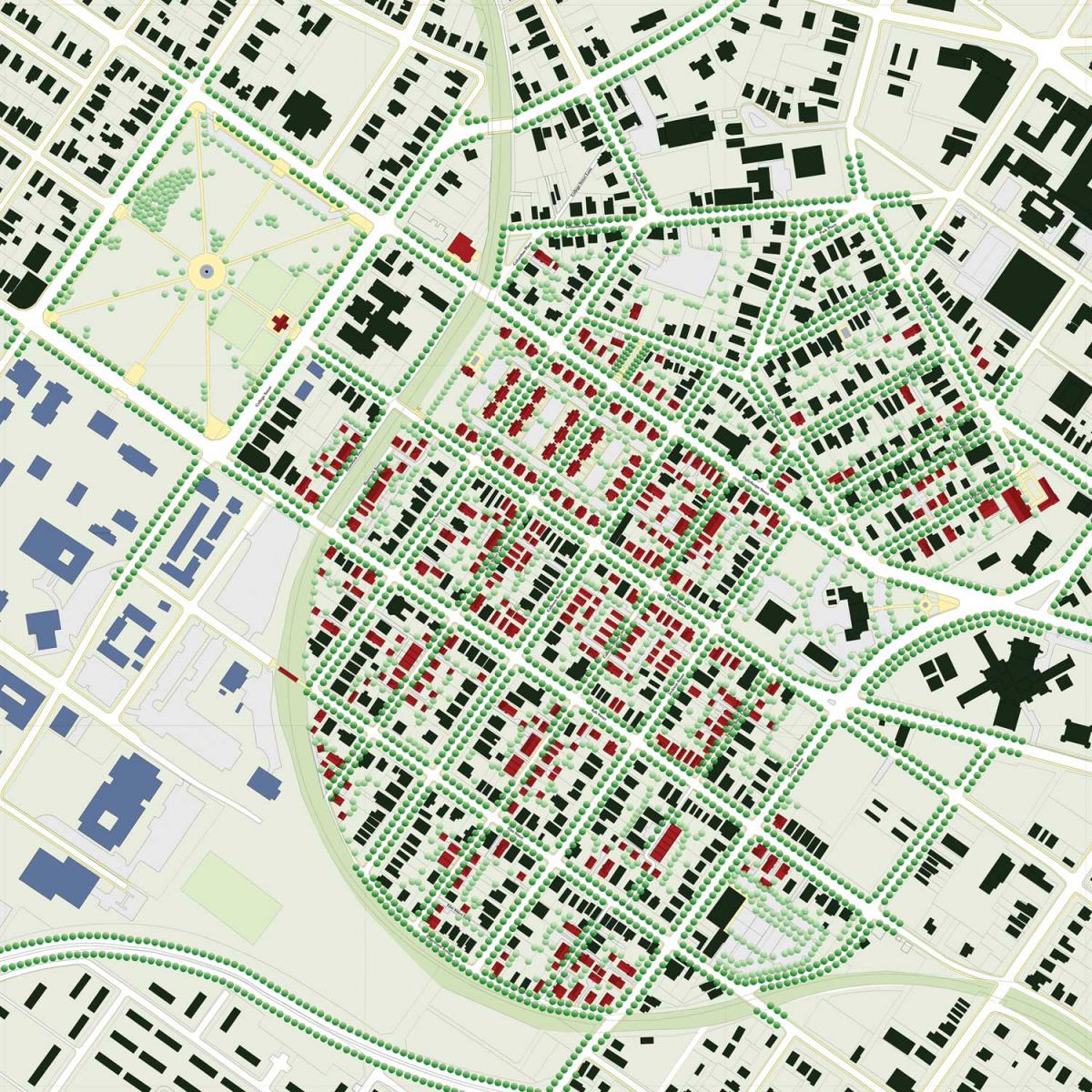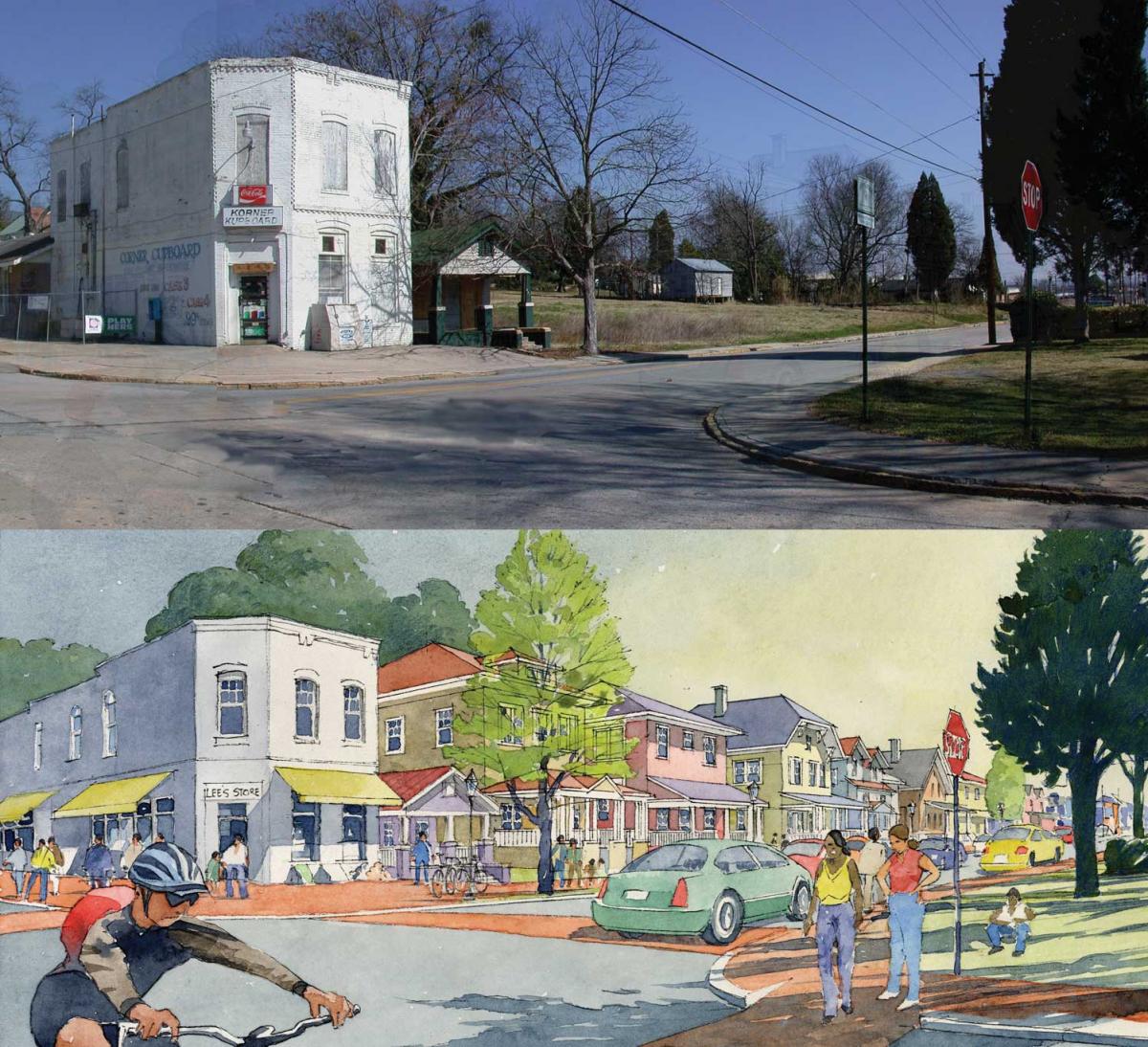
Five keys to a successful master plan
More than 18 years ago I wrote about a plan by a largely volunteer new urbanist team to revitalize the Beall’s Hill neighborhood in Macon, Georgia, adjacent to Mercer University. It was a good plan, but was it going to happen or work? I believed, but I didn’t really know.
The vision for the long-depressed, mostly African-American neighborhood called for mixed-income infill housing, the replacement of an aging barracks-style public housing project, rehabbing of old retail buildings, plans for building types that could overcome zoning barriers, and more. The plans came out of a charrette led by Elizabeth Plater-Zyberk, then dean of Miami School of Architecture, and included Dhiru Thadani, who later refined the plans over a period of years.
I return to this story because of an essay be Peter Brown, the Mercer University professor who was largely responsible for bringing the new urbanist team to town. Brown’s essay is included in Thadani’s massive book Reflections on Seaside.
Brown, who visited Seaside in the summer, was inspired by the town and the planning principles behind it, which were employed in Beall’s Hill. How could a resort town on the beach, largely enjoyed by affluent people, have any relevance to a disinvested urban neighborhood? Over the last two decades, the project has helped to transform Macon, beyond anyone’s expectations. “The neighborhood schools are slowly turning around. Mercer faculty and Mercer students now live in these thoroughly mixed-race, mixed-income neighborhoods. That tax rolls are way up,” Brown says. “When the plan was presented, the longtime Executive Director of the Macon Housing Authority said, ‘I came here expecting to the sold a used pickup truck and instead we’re driving out a brand-new red Corvette.”

The ideas provided a framework for rebuilding a neighborhood on a human scale, but that didn’t ensure success. The best part of Brown’s essay speaks to the importance of good Master Plan, the principles behind it, and how to nurture it. These five bullet points quote directly from Brown’s essay:
- Think big—even if, at first, you’re not really sure what you’re thinking. If you start out thinking small, you’ll never get there. That beat up old pickup truck that John Hiscox thought he was buying would have been junked long ago. Macon Heritage Foundation had originally passed on the project because their old leadership thought it would never be anything but, at best, student housing—a student ghetto. We had to fight that developer’s dream, student housing, more than once.
- You have to have a Master Plan based on principles: walkability, connect-ability, adjacent amenities, civic focal points, human scale, attractive schools, churches, eateries, topographic and transportation boundaries, signature design elements for the public realm, distinctive style guidelines (with recognizable types) for the public realm. In essence, a place that people can identify, and identify with.
- You have to have a Keeper of the Plan, someone to keep hammering, to keep focus. As Lizz said one evening, “There’s a reason churches have weekly reviews of the religious basics.” Other priorities, other leaders, and sheer entropy, will dissipate the vision if you let it.
- You have to have early, visible successes. Not everyone gets as excited by the beautiful Master Plan as the architects do—indeed, ours was beautiful and mainly Dhiru’s work. Show people what’s possible. Go after those first pioneers—Mercer used a very generous down-payment assistance program—so they become your best advocates. Be sure the folks who have been early investors get their taste of the largesse as well—Mercer had a generous Federal Home Loan Bank façade-improvement grant for existing homeowners.
- And not least, the true Seaside lesson: take your time, see where it goes, let many minds and eyes shape it as it goes. Trust the bones, the humane vision, the talents, and pocketbooks of an array of folks. In the case of Beall’s Hill, it was the 100-year-old elementary school that didn’t close after all, instead it became an award-winning renovation and a Blue Ribbon School. It was the group that coalesced around the Park and against all odds has returned it to the splendor of a century ago. It was the abandoned church at the crucial corner of the neighborhood that is now Mercer’s badly needed performance space. It was the Mercer student-led proposal for a College Street Corridor to reconnect Mercer to Downtown that has physically transformed everyone’s sense of the urban core and its energies. It was the throwaway Interstate highway interchange that has become Mercer’s new front door, attracting two national hotel changes together with high-end restaurants. Trust the bones, let them flesh out as they will. But, don’t forget the Master Plan.

Many of Brown's points resonate with me. The last one shows how much has been achieved in Beall's Hill in the last two decades. But number 2, the Master Plan based on principles, is too easy to give up on. Don't. That's the key to turning any ordinary project into a great one.




